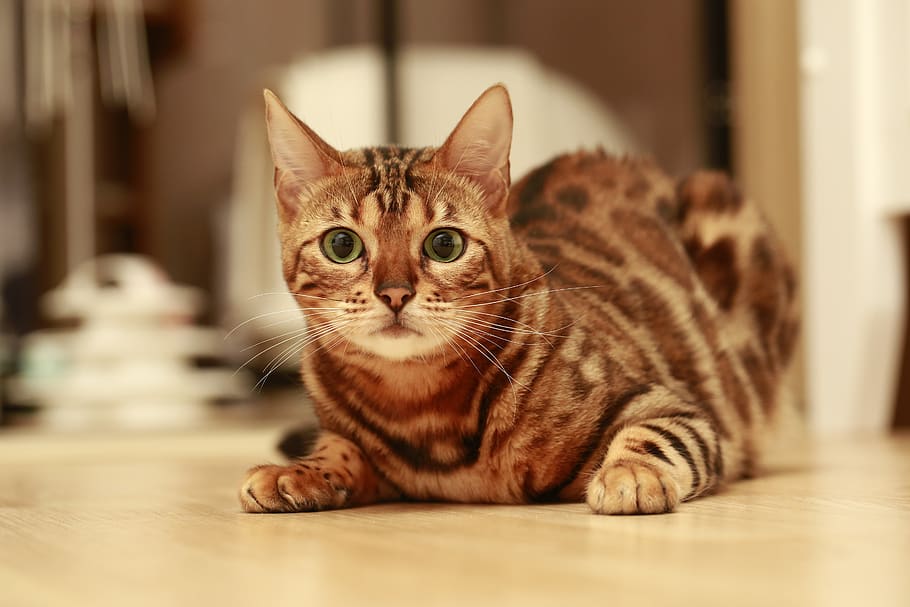What is Feline Coronavirus (FCoV)
The cat coronavirus is a virus responsible for two distinct diseases: often mild digestive symptoms and feline infectious peritonitis called “FIP,” which is usually fatal. To date, there is no treatment to cure affected animals. The only method is effective prevention, although it is still limited.
What is feline coronavirus?
As its name indicates, it is a virus whose main characteristics are an ability to modify its form (mutation) to escape the cat’s immune defences and a resistance in the environment of several weeks, which explains its high transmission potential.
In the case of infection by the coronavirus, 40 to 75% of cats present a chronic digestive disorder. For as yet unknown reasons, in just under 30% of the affected feline population, the virus changes its morphology: it mutates. In this case, the animal develops infectious peritonitis, of which there are two forms: one called wet, and one called dry.
Symptoms of feline coronavirus
Be careful, “infected” does not mean “sick.” Some cats carrying the coronavirus will not show any illness signs, either temporarily or during their whole life. They are called “asymptomatic carriers.” As a result, they escape the surveillance of their owners and the veterinarian but remain individuals at risk capable of excreting the virus and contaminating their fellow cats.
For others, chronic digestive problems are characterized by occasional diarrhea and vomiting. This is often benign and does not necessarily alert the cat’s owners.
On the other hand, feline infectious peritonitis is generally fatal in both its wet and dry forms. In a few weeks, its evolution can be catastrophic.
The wet form is characterized by:
– the accumulation of liquid in the animal’s belly;
– fever;
– a lack of appetite;
– breathing difficulties.
The dry form is more difficult to show: the cat has a fever, lack of appetite, vomiting, diarrhea. At the end of the evolution, nervous symptoms are often observed, such as paralysis or a staggering gait.
How is feline coronavirus transmitted?

The coronavirus, in its initial non-mutated form, is transmitted via feces. However, when it mutates, the infection routes are more numerous and include saliva and urine. As a result, the potential for transmission of this virus is extremely high.
Diagnosis of feline coronavirus
Diagnosing animal coronavirus infection is complicated except in the wet form of infectious peritonitis. The accumulation of fluid in the animal’s belly rarely goes unnoticed and arouses the suspicion of the veterinarian. In other cases, a blood test is taken to detect antibodies against this virus. However, it is currently impossible to distinguish between antibodies directed against the non-mutated virus (benign coronavirus) and those directed against the mutated virus (fatal coronavirus). Only genetic tests on fecal samples, which are much more expensive, can make all the difference.
Besides, it is impossible to predict when and why the coronavirus will mutate in cats. At any time, a cat that is asymptomatic or has a benign digestive disorder can develop the disease’s fatal form.
Treatment of feline coronavirus
No treatment is effective against this coronavirus. In cases of feline infectious peritonitis, only palliative treatment can be prescribed by your veterinarian, but euthanasia is often recommended at the end of the disease’s evolution.
What are the means of prevention of feline coronavirus?
Any animal roaming outdoors is, therefore, likely to contact other cats and be at risk. Also, any animal arriving in a new home where other cats live can introduce the disease.
Ideally, a blood test should be taken to identify whether antibodies to the coronavirus are present. This test does not guarantee that the cat will not develop a fatal form of coronavirus. The use of genetic analyses in catteries would allow the identification of populations at risk.
Note: These are currently recommendations and, in no way, a legal obligation.
Hope the above helps you to identify if your cat is at risk. Please, remember to share this post in your network.



